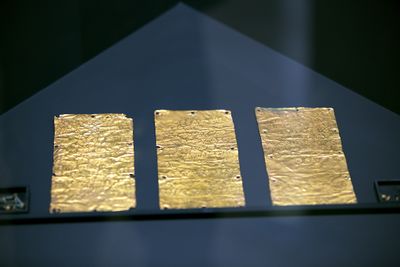
FAIR is a non-profit organization dedicated to providing well-documented answers to criticisms of the doctrine, practice, and history of The Church of Jesus Christ of Latter-day Saints.
When it first appeared, the Book of Mormon was attacked for the alleged absurdity of having been written on golden plates and its claim of the existence of an early sixth century B.C. version of the Hebrew Bible written on brass plates. Today, however, there are numerous examples of ancient writing on metal plates. Ironically, some now claim instead that knowledge of such plates was readily available in Joseph Smith's day. Hugh Nibley's 1952 observation seems quite prescient: "it will not be long before men forget that in Joseph Smith's day the prophet was mocked and derided for his description of the plates more than anything else." [1]

Notes

FAIR is a non-profit organization dedicated to providing well-documented answers to criticisms of the doctrine, practice, and history of The Church of Jesus Christ of Latter-day Saints.
We are a volunteer organization. We invite you to give back.
Donate Now